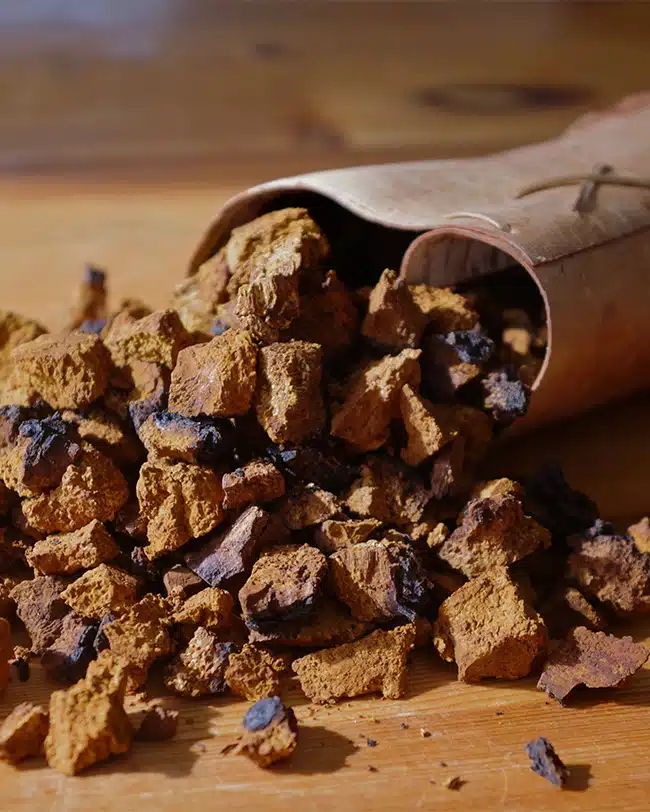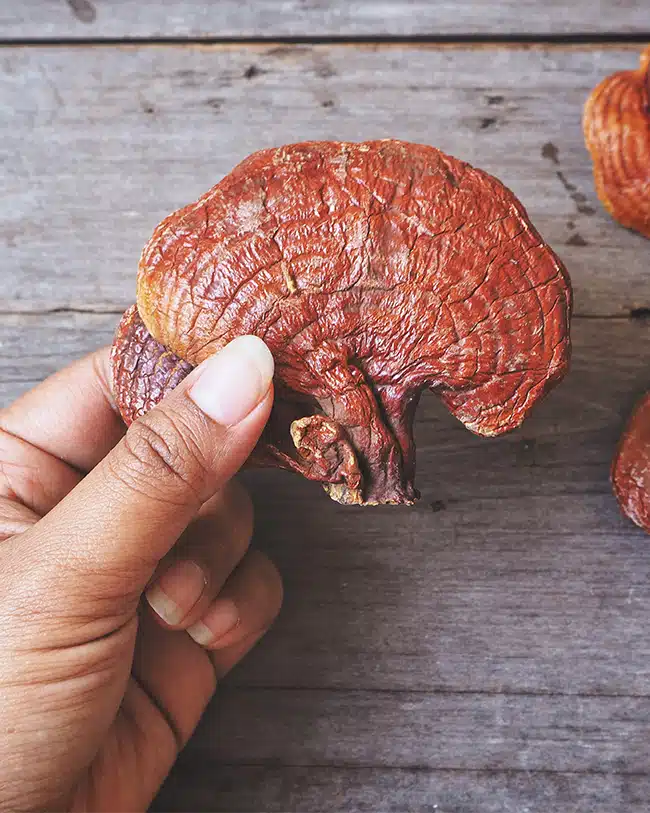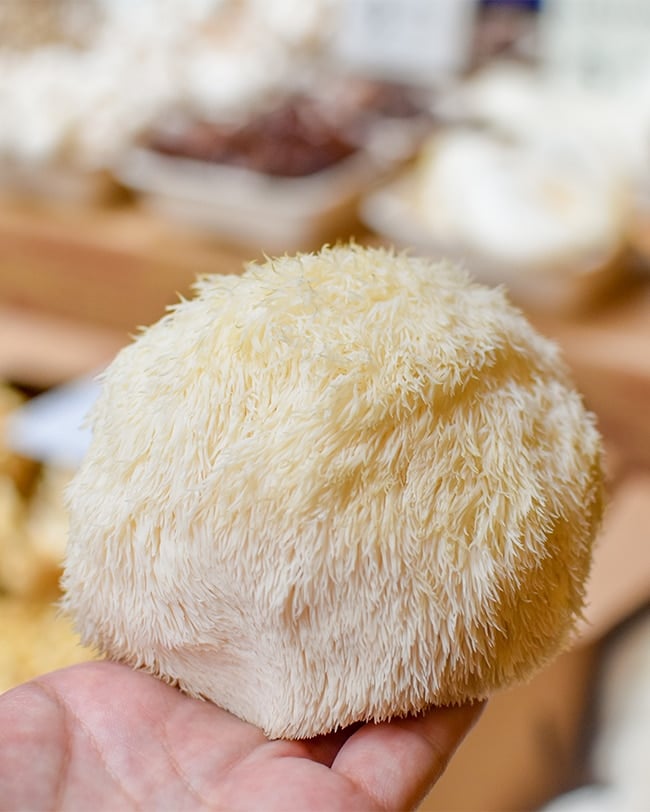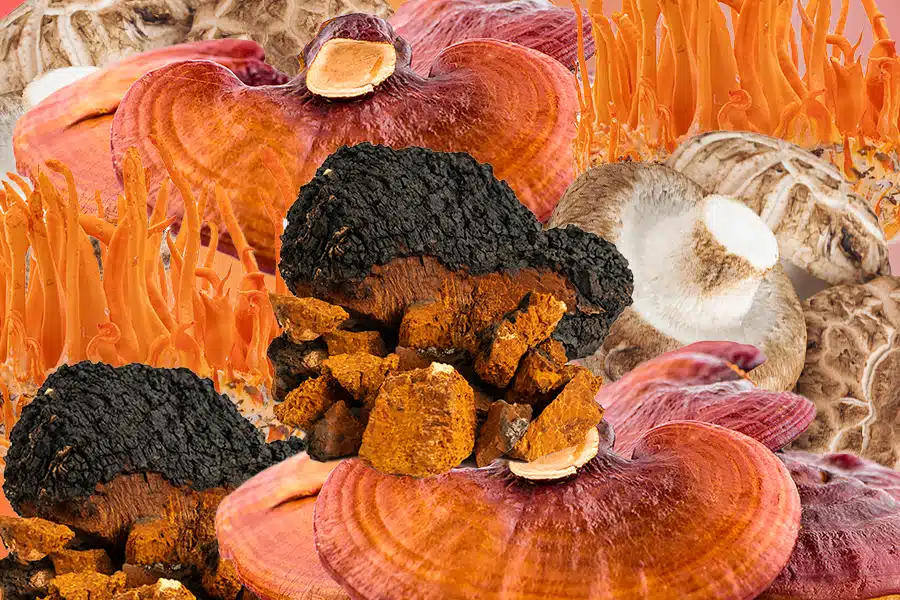Mushrooms are one of the most functional foods available and offer a natural source of sustainable energy with lasting effects over time. The word “energy” can mean many different things: the metabolic energy we get from food, feelings of mental clarity, contentment, and focus, to athletic stamina and endurance. Mushrooms are among the most functional foods available and offer a natural source of sustainable energy with lasting effects over time. A “functional food” is a food that is not only healthy to eat but may also have therapeutic properties. In this article, we’ll explore mushrooms for energy: how medicinal fungi impact our feelings of energy, their nutritional value, and their impact on the brain.
Mushrooms do not give you the quick buzz you might get from a cup of coffee or an energy drink. Instead, the energy they provide can be best compared to marathon energy versus sprint energy. Many of us wake up in the morning and immediately grab a cup of coffee to help us feel more awake. This is typically a jolt of energy that peaks quickly and then dwindles quickly over time. This can put us in an all-day cycle of cup after cup, or leave us hunting for the afternoon sugar boost that leads to an inevitable crash at the end of the day. As we’ll explore, mushrooms provide stable source of energy throughout the day.
Do Mushrooms Give You Energy?
Nutrition from the food we eat is where we get most of the energy our bodies need to fuel our day. Depending on our activities, what we need to accomplish, time of day, or what hijinks we may have gotten into the evening before, can create a lot of variability as to the types of energy we may need. Mushrooms are rich in complex carbohydrates and are considered a high-protein food (varies according to species). Those complex carbohydrates—which take longer to metabolize than simple sugars—release steady energy over time. Their high content of polysaccharides serve as fatigue fighters. Many mushrooms are also a good source of vitamin B12, which helps our bodies convert glucose into energy from food.
Beta-glucans, a type of polysaccharide found in fungal cell walls, provide some of the adaptogenic qualities found in mushrooms. Research shows that this adaptogenic action—a broad term introduced by scientist N. V. Lazarev in the 1940s while studying medicinal herbs—brings the body back into balance after stress. This may benefit us in many ways: boosting immunity, reducing fatigue, and increasing recovery time. The added benefit of their anti-inflammatory action helps reduce stress over time, which keeps you from feeling run down. Certain adaptogenic mushrooms like lion’s mane may also stimulate neuronal growth factor (NGF), according to recent studies, mostly conducted in animals and early experiments. People often use this mushroom for mental clarity, better focus, and decreased mental fatigue.
Yet, it’s also worth mentioning an important caveat to laboratory research: Some statistics suggest that only one-third to one-half of animal studies are successfully replicated in humans. So, from the scientific standpoint, there’s much to uncover about the medicinal properties of many mushrooms. Still, fungi have been used as medicines for thousands of years, across various cultures—and they’re undoubtedly healthy to eat, as long as you don’t pick a poisonous one.
Read: Nootropic Mushrooms: The Fungi That Build Better Brains
What You Should Know Before Taking Mushrooms for Energy
Before you start your search for energetic mushroom types, it is important to consider synergy. Synergy is a concept frequently used in herbalism that refers to the symphony of effects that happens when more than one mushroom—or plant—is taken in combination., So, while you may seek the specific effects of a particular mushroom, when multiple mushrooms are taken together, their effectiveness can be magnified. Their sum is greater than the individual mushrooms alone. So, instead of buying an isolated extract or sole mushroom type, you may want to consider formulas or blends that include several mushroom species. They will work harder together and have greater effectiveness.
You may also want to consider the best method for consuming mushrooms regularly. The human body can use energy from food right away, but taking advantage of the medicinal properties of mushrooms can take some time. Energy from mushrooms is a process that requires consistency from a few weeks to a couple of months. It’s like adding logs to the fire to keep it burning bright. Not everyone has the time nor means to source fresh mushrooms and incorporate them into their daily diet. The good news is mushrooms come in many forms that make it relatively easy to get them into your daily rotation. For example, tinctures and powders can be added to coffee, tea, or any beverage. And mushroom capsules are one of the easiest ways to manage dosage and maintain a routine.
How to Grow Shrooms Bundle
Take Both of Our Courses and Save $90!
Read: Our Guide to Medicinal Mushrooms
Best Mushrooms for Energy
A scholarly team led by Dr. Ping Geng of the Hong Kong Polytechnic University explored the anti-fatigue potential of medicinal mushrooms in a research review, published in 2017. They articulated that the fungi could fight fatigue via many different mechanisms. Five major systems in the body are targets for the energizing effects of mushrooms–the muscular system, the antioxidant system, the cardiovascular system, the hormonal system, and the immune system. Muscle fatigue is largely driven by the depletion of glycogen stores in the liver and muscles. When they become depleted lactic acid accumulates in the muscles. That’s the burn you feel during exercise. Mushrooms increase liver and muscle glycogen storage capacity and reduce blood lactic acid.
Mushrooms enhance the body’s antioxidant system by stimulating enzymes and limiting the detrimental effects of free radicals and environmental stressors. As for the immune and hormonal systems, mushrooms stimulate immune cells and the expression of cytokines (small proteins in the body that trigger immune response), as well as stabilize testosterone levels to provide a sustained feeling of energy. Mushrooms also enhance liver efficiency, blood circulation, and blood glucose regulation. All in all, mushrooms promote proper function of our bodily systems to maintain balance and fight fatigue, leaving you feeling energized over longer periods of time.
Cordyceps

Research suggests that cordyceps show potential benefits to the heart and respiratory system, resulting in energy-boosting effects and enhanced aerobic capacity. Cordyceps do so by increasing blood supply to the organs, extremities, and the brain and defend the heart against stress. Cordyceps also increase oxygen-use efficiency, increasing stamina and endurance while improving recovery from fatigue. In 1993, at the Chinese National Games, a group of female athletes broke nine world records and attributed their success to the regular consumption of cordyceps. In another study, a cordyceps formula, taken over 12 weeks, improved exercise performance in healthy older adults.
Chaga

Chaga has grown in popularity recently—you may have seen chaga lattes and chaga teas pop up on the menu at your local coffee shop. It has become a popular coffee substitute but contains no caffeine. Early research suggests that chaga enhances the uptake of glucose to cells, which maximizes energy pathways in the body. Chaga has demonstrated increased endurance in animal studies and showed greater energy stores in liver and muscles in mice., Chaga also has some of the highest levels of antioxidants found in mushrooms.
Reishi

Reishi, known as the “mushroom of immortality,” has been used for centuries in Asian cultures as a universal wellness tonic to increase vitality, longevity, and energy. Early studies show that reishi’s therapeutic potential are quite extensive, including promoting energy. Reishi has protective effects against oxidative stress from rigorous exercise by increasing antioxidant enzymatic activity. It may be is particularly good for reducing mental fatigue, a 2018 review suggests, as it is neuroprotective and may aid in the regeneration of neurons in the brain. The same review highlights that Rreishi is rich in triterpenes, natural chemical compounds which contribute to its potent anti-inflammatory properties, diminishing the effects of stress on our bodies. It also supports recovery and reduction of fatigue.
Shiitake

Shiitake contains the bioactive compound lentinan and other polysaccharides with many potential therapeutic benefits, including anti-fatigue qualities. Shiitake has particularly significant antioxidative effects. With its effective ability to scavenge free radicals and enhance antioxidative enzyme activities, research suggests that shitake may protect tissues from exercise-induced oxidative damage, thus reducing physical fatigue.
Lion’s Mane

Lion’s mane is not only adaptogenic, but a known natural nootropic. Results from animal studies indicate that lion’s mane may contribute to improving how our bodies metabolize energy, increase the body’s adaptive capacity for exercise, and delays physical fatigue. This may help mitigate physical fatigue by increasing the storage capacity for glycogen in liver and muscles. Other studies suggest that bioactive components like phenols, flavonoids, and ascorbic acids in lion’s mane improve cognition in aging mice, as well as support brain systems vital for learning, memory, and mood. Lion’s mane targets the central nervous system (CNS)—the brain and spinal cord. It also reduces inflammation, and increases blood flow to the CNS, improving our ability to focus and think more clearly.

DoubleBlind is a trusted resource for news, evidence-based education, and reporting on psychedelics. We work with leading medical professionals, scientific researchers, journalists, mycologists, indigenous stewards, and cultural pioneers. Read about our editorial policy and fact-checking process here.

DoubleBlind Magazine does not encourage or condone any illegal activities, including but not limited to the use of illegal substances. We do not provide mental health, clinical, or medical services. We are not a substitute for medical, psychological, or psychiatric diagnosis, treatment, or advice. If you are in a crisis or if you or any other person may be in danger or experiencing a mental health emergency, immediately call 911 or your local emergency resources. If you are considering suicide, please call 988 to connect with the National Suicide Prevention Lifeline.



